Infowars, resurrected: how the conspiracy site evaded a cross-platform ban
Social platforms previously banned far-right personality
Infowars, resurrected: how the conspiracy site evaded a cross-platform ban
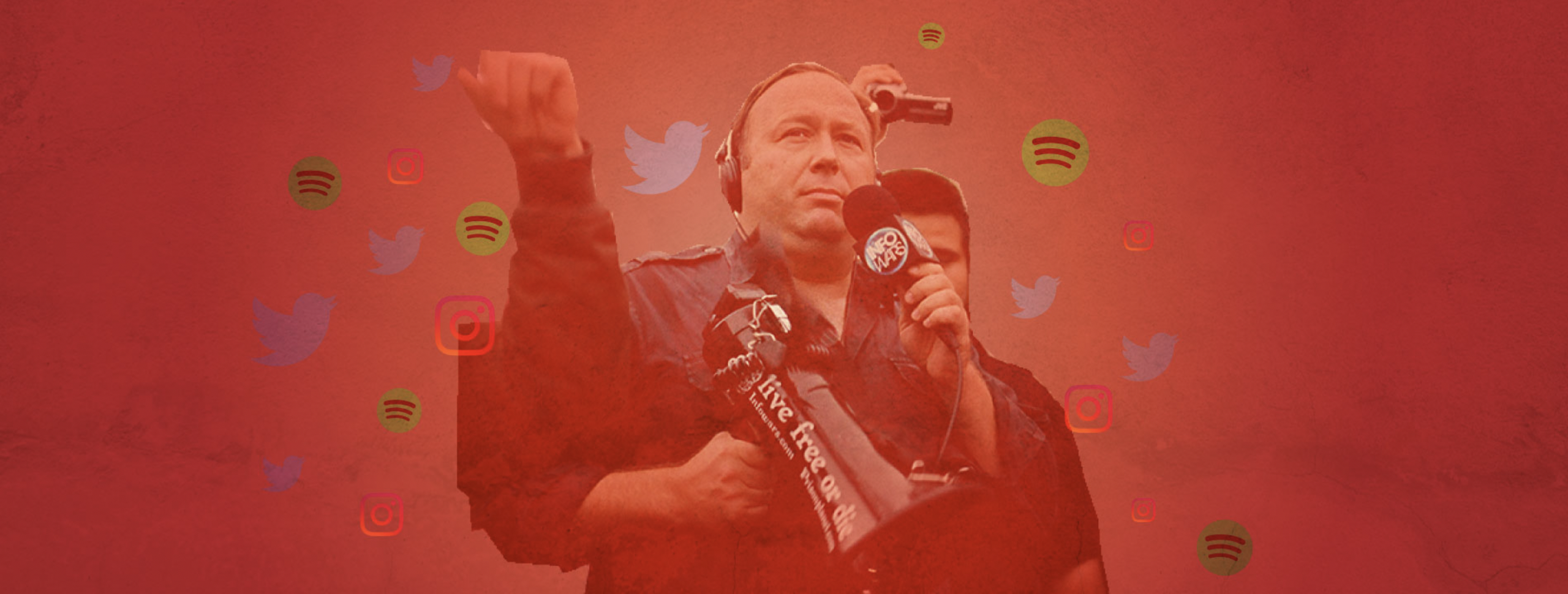
Social platforms previously banned far-right personality Alex Jones, but part of his media empire lingered until a recent Twitter takedown
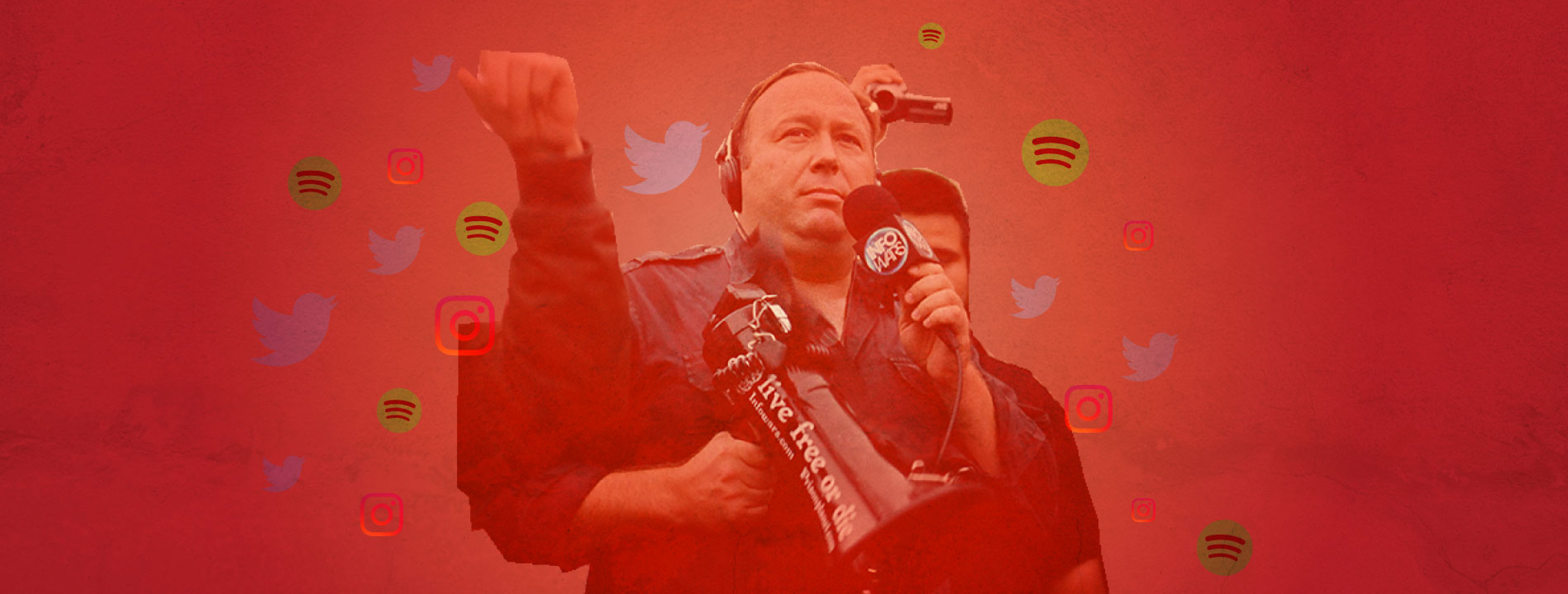
Despite being summarily de-platformed by several major social media websites in recent years, Infowars, the far-right conspiracy website owned by radio host Alex Jones, successfully resurrected itself on social media under the name Banned.Video until it was taken down yet again by Twitter on April 16, 2020.
The reemergence of Infowars’ content on social media, despite a cross-platform ban, illustrates the practical difficulties platforms face in keeping banned content from resurfacing. Banned.Video features content similar to Infowars, promoting false claims, health disinformation, and unverified political conspiracy theories. In contrast to Infowars, however, the Banned.Video does not exclusively focus on Alex Jones but features an array of far-right personalities.
Evading the platform ban
In 2018 and 2019, several major social media platforms, including Facebook, Twitter, Instagram, and YouTube, banned Alex Jones and Infowars from using their services for violations of community standards that prohibit hate speech. Jones and his site have a history of peddling false information, personal attacks, and hoaxes, and the move came after months of mounting pressure on social media companies to address the spread of misinformation and hateful speech online.
Eventually, Jones managed to get his content back on social platforms by exploiting the fact that the bans applied only to his personal accounts of his and those connected to Infowars, rather than every brand connected to him. Infowars is not a standalone entity; it operates under the umbrella of Free Speech Systems LLC, a Texas-registered company headed by Jones.

Dun & Bradstree, the business analytics company, reports that Free Speech Systems makes about $7.2 million per year. Jones’s media empire, built around broadcasting conspiracies, started back in the 1990s as a radio show. Since then, Jones has gone on to create a series of conspiratorial documentaries, as well as a network of online properties.
After a series of social media platforms banned Jones and Infowars, a domain called Banned.Video was registered in July 2019, with a unique IP address and Google Analytics ID from Infowars[.]com.
The Internet Archive’s WayBack Machine had an early copy of Banned.Video’s website from September 2019. The archived version of the homepage did not identify the site as part of Free Speech Systems. In early 2020, however, Infowars started promoting Banned.Video on its platform as part of its wider Free Speech Systems network.

Banned.Video posts also started appearing on the Twitter timelines of popular far-right personalities, among others.

The Banned.Video social media ecosystem
But Banned.Video did not rely solely on far-right personalities amplifying links to its external domain on social media: it also maintained its own social media accounts, such as the Twitter account taken down in April 2020. At the time of publishing, for example, Banned.Video’s account on Periscope appears to be still active.

It also had an account on TikTok, the short video-sharing app popular among teens, until it too was quietly taken down. A snapshot of the account before it was removed indicated that it prominently featured “deep state” conspiracies. It had collected over 12,000 followers and roughly 63,000 likes.
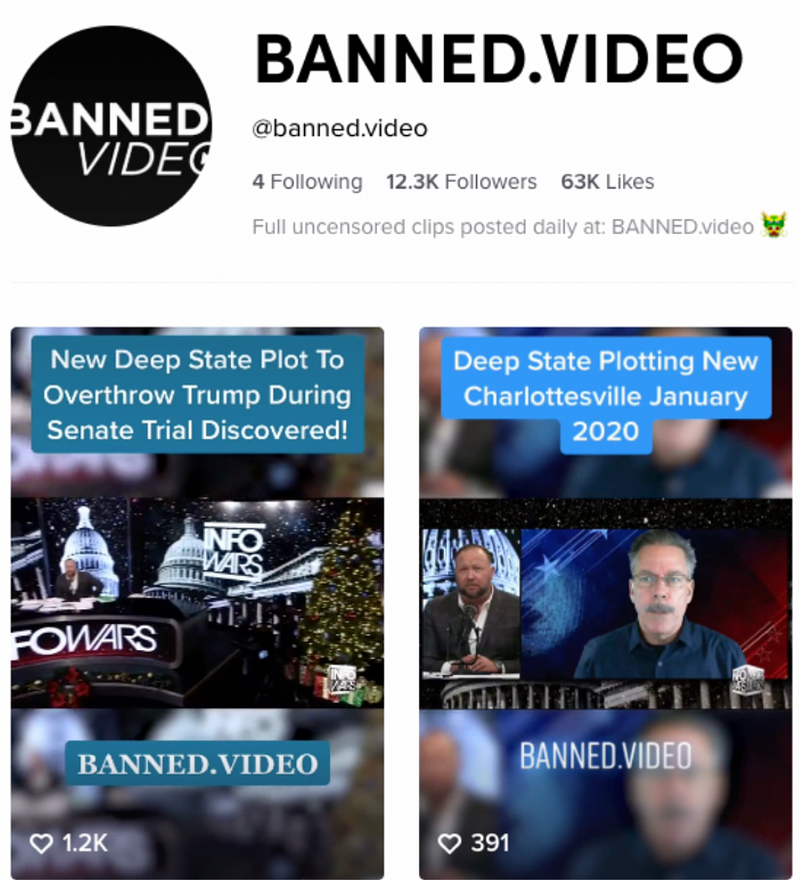
Using a combination of various usernames on Namechk, a tool for checking similar usernames across platforms, the DFRLab also found accounts named after Banned.Video on Instagram and Spotify but could not link them to the site.
On Instagram, an account named “banneddotvideo” posted sensational content related to Alex Jones and various other far-right and conservative pundits, such as Sebastian Gorka.
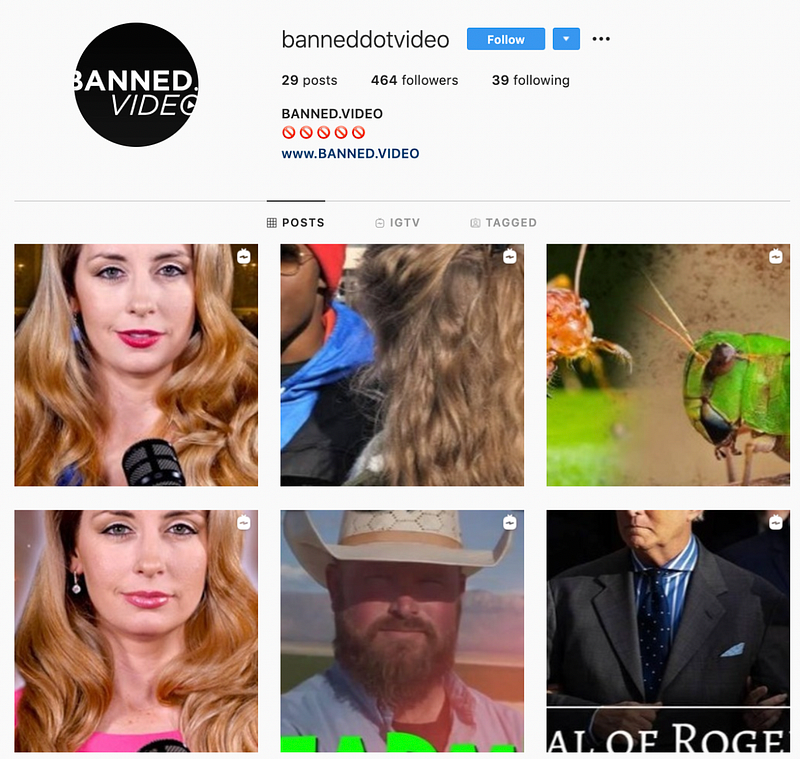
On Spotify, a channel named after Free Speech Systems mostly featured audio content from BANNEDdotVIDEO. Spotify is a popular platform for podcasts, so the channel may have been trying to build an audience without producing original content.
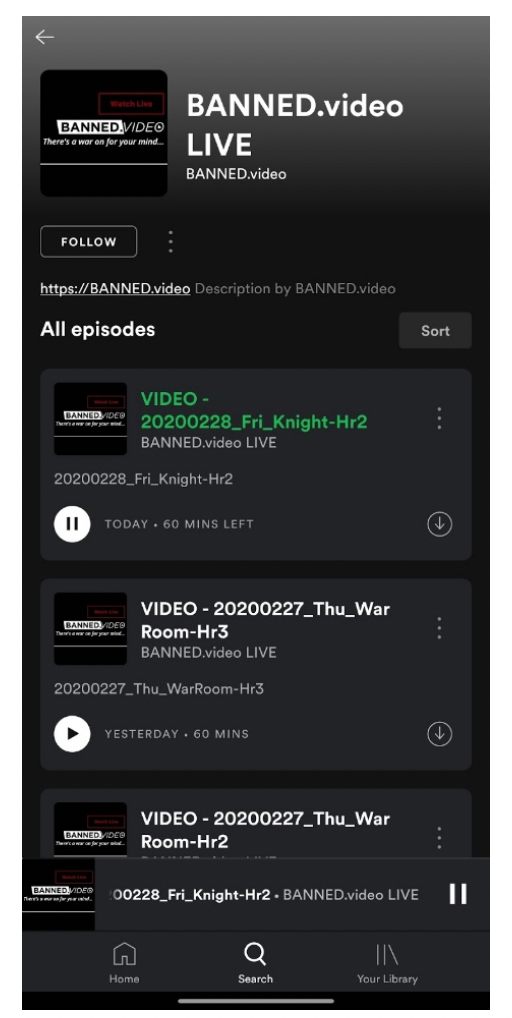
While the platform bans may have de-platformed the majority of Jones’ Infowars assets, thereby diminishing his reach, it remains a challenge to de-platform the entirety of his sprawling media empire. As can be seen in this particular case, BANNEDdotVIDEO stepped in to fill the void on social media left behind by Infowars’ absence, continuing to broadcast Jones’s conspiratorial and inflammatory content to his existing audience.
Follow along on Twitter for more in-depth analysis from our #DigitalSherlocks.

